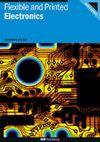气溶胶喷射打印超细特征的工艺考虑
IF 3.2
4区 工程技术
Q3 MATERIALS SCIENCE, MULTIDISCIPLINARY
引用次数: 0
摘要
近年来,气溶胶喷射(AJ)印刷已成为一种越来越受欢迎的技术,应用于从生物医学领域到军事应用再到印刷半导体的研究。为了理解工艺参数和基本物理原理的影响,已经做出了广泛的努力。然而,很少有人关注超小型和高精度印刷特征的优化。将打印机推向极限,并以微米精度制造小到几十微米的结构,这带来了重大挑战,因为打印大型特征时可以忽略的影响起着至关重要的作用。这项研究展示了打印速度如何迅速导致无法忍受的失真。与大特征打印不同,打印速度不能用作设置打印厚度的自由参数。我们将讨论由转向/提升快门和动态快门引起的非恒定打印行为,作为许多问题的解决方案,但前提是子程序代码得到优化。本文首次公开了对代码所做的修改。知道打印精确的特征通常会导致高打印厚度,我们将简要讨论厚纳米颗粒膜干燥引起的裂纹问题。总之,本文介绍了AJ打印超细特征的一系列重要考虑因素,并对在其极限下操作打印机的特殊性进行了有趣的见解。本文章由计算机程序翻译,如有差异,请以英文原文为准。
Process considerations for Aerosol-Jet printing of ultra fine features
In recent years, Aerosol-Jet (AJ) printing has become an increasingly popular technology applied in research ranging from the biomedical field to military applications to printed semiconductors. Extensive efforts have been made to understand the influence of process parameters and the underlying physical principles. Nevertheless, little attention has been paid to the optimization of ultra-small and highly precise printed features. Pushing the printer to its limits and manufacturing structures as small as tens of microns with a micrometer accuracy poses significant challenges, because effects that can be ignored for printing large features play a crucial role. This study demonstrates how the printing speed quickly causes intolerable distortions. In contrast to large-feature printing, the printing speed cannot be used as a free parameter to set the print thickness. We will discuss the non-constant printing behavior induced by the divert/boost shutter and present shutter on the fly as a solution to many problems, but only if the subroutine code is optimized. The modifications made to the code are disclosed in this paper for the first time. Knowing that printing precise features often results in a high print thickness, we will briefly discuss the issue of cracks caused by the drying of thick nanoparticle films. Altogether, this paper presents a range of important considerations for AJ printing ultra-fine features and an interesting insight into the particularities of operating the printer at its limits.
求助全文
通过发布文献求助,成功后即可免费获取论文全文。
去求助
来源期刊

Flexible and Printed Electronics
MATERIALS SCIENCE, MULTIDISCIPLINARY-
CiteScore
4.80
自引率
9.70%
发文量
101
期刊介绍:
Flexible and Printed Electronics is a multidisciplinary journal publishing cutting edge research articles on electronics that can be either flexible, plastic, stretchable, conformable or printed. Research related to electronic materials, manufacturing techniques, components or systems which meets any one (or more) of the above criteria is suitable for publication in the journal. Subjects included in the journal range from flexible materials and printing techniques, design or modelling of electrical systems and components, advanced fabrication methods and bioelectronics, to the properties of devices and end user applications.
 求助内容:
求助内容: 应助结果提醒方式:
应助结果提醒方式:


